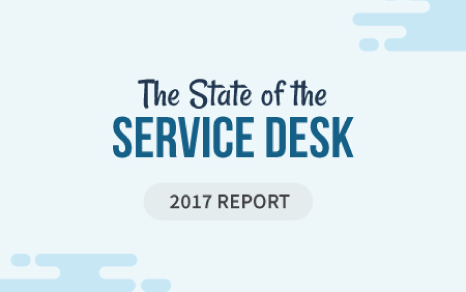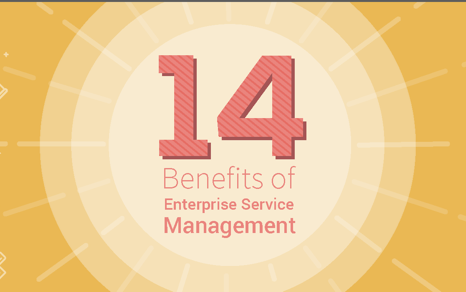What is a CMDB (Configuration Management Database)?
A guide for effectively implementing and managing a CMDB.
For Free. No Credit Card Required.
A Configuration Management Database (CMDB) is a valuable data repository that an organization can use to store information about its entire IT infrastructure and how it is configured. The data housed in a CMDB includes lists of assets (referred to as configuration items, or CIs) and their dependencies, or relationships, with one another. A CMDB provides essential insight to IT leaders who must manage their IT infrastructure as effectively as possible while continuously improving the IT services they deliver.
An organization can use a CMDB to store configuration information about hardware, software, systems, facilities, and even personnel. A CMDB manages data about a diverse set of IT components in one place, even if those assets are widely distributed across multiple locations, both in on-premises environments as well as in the cloud. Without a CMDB serving as an integrated source of truth for an organization’s IT infrastructure and the components that comprise it, an organization would have a difficult time achieving a comprehensive view of its IT estate.
CMDBs and the configuration management processes that are associated with them support modern IT operations. With visibility into all the assets present in the environment as well as insight into their dependencies, an organization’s IT team can identify vulnerabilities faster and manage risks more effectively.
A CMDB also enables an organization to perform service management processes such as incident management, change management, and problem management. In addition, it is an essential resource for decision-makers seeking timely and accurate information for the purpose of improving the cost, quality, and performance of IT services that the organization offers.
A CMDB stores lists of information about and relationships between individual Configuration Items (CIs). These lists, which also include detailed information on each CI’s attributes, help to provide a comprehensive overview of the IT estate within an organization.
A configuration management database is often considered part of a larger IT Service Management (ITSM) platform. An advanced ITSM platform includes native discovery tools for populating data into the CMDB (such as discovery and data import tools) from multiple sources within the organization. It should also have built-in tools for consuming data from the CMDB (such as ticketing tools, change management systems, and reporting capabilities).
IT organizations can use discovery probes and data import tools to automatically identify configuration items in the IT environment and populate them into the CMDB, saving time and reducing the potential for human error. Some organizations may opt to use manual inventories and audits to maintain their CMDB data instead. In those cases, they must take additional steps to keep their CMDB records up to date.
Once all the necessary data has been loaded in the CMDB, the information can be accessed in a unified and consistent manner. A robust ITSM platform with strong CMDB capabilities is necessary for obtaining this data directly from the CMDB. Such an ITSM platform should also be able to use information from the CMDB to provide ticketing, incident management, problem management, change management, and other IT services to the organization.
A CMDB gives an organization 360° visibility into the complete spectrum of assets within its IT infrastructure. IT leaders can then use this insight to enhance business decision-making and improve several of their core ITSM and ITOM processes.
IT leadership and staff can use a CMDB to create an integrated source of truth for the organization’s assets and their entire lifecycles, opening the door to continual IT service delivery improvements while also streamlining asset governance and compliance processes.
CMDBs play a crucial role in service management processes such as incident management, change management, and problem management. In addition, the insights they enable can facilitate more efficient root cause analysis and impact analysis.
A CMDB supports IT leadership and staff in several ways. For example:
IT practitioners tap CMDB insights for planning purposes. They do this at a high level with regard to IT architecture and portfolio management, as well as at a more granular level when it comes to asset management and capacity projections. They can also use the information found in a CMDB to improve change management and organizational risk management processes.
Junior-level IT employees such as help desk analysts can use the data found in a CMDB, particularly the data on relationships and dependencies, for faster root cause analysis. IT employees that liaise with the finance department can also use a CMDB’s records to perform budget allocations based on billing statements and to properly manage finances related to IT expenditures.
A Configuration Item (CI) is an element of an organization’s IT estate. Any part of the IT environment that plays a role in delivering an IT service should ideally have its own CI record in a CMDB, so it can be properly tracked and managed. There are many different types of CIs that an organization may want to store in a CMDB, especially considering the fact that the average IT environment is rapidly expanding and becoming steadily more complex.
An individual configuration item can include core IT infrastructure such as software and hardware, but it can also encompass other important assets like office locations, documentation, cloud services, and even personnel. Most modern CMDBs already come with a full set of CI types that an IT service desk might need in order to classify CIs that exist within the organization’s IT environment.
Beyond simply storing information about the type of CI involved, a CI record also logs detailed data about the CI’s unique attributes and its current configuration state. Each CI may be grouped together in a list for search and analytics purposes. CI records also identify any relationships or dependencies that may be present between CIs in the organization’s IT environment.
A CMDB is an essential part of a modern company’s IT asset management process. The benefits of implementing a configuration management database include:
1. Centralized location: A CMDB puts the complete repository of data about an organization’s IT estate into one centralized location. This provides easy accessibility and eliminates tool-hopping. It also empowers IT to understand the relationships between assets across the entire IT estate, gaining the necessary visibility to continually improve IT service delivery.
2. Integration of data: When there is data from external sources, like vendors and third-party applications, it can be easily integrated into the configuration management database. An advanced, multi-source CMDB includes out-of-the-box native discovery solutions and real-time connectors with leading discovery solutions, identity providers, and endpoint management tools.
3. Understanding the composition and uses of assets: Whether it is understanding the composition of critical assets and the components they depend on or understanding the business uses of all assets, CMDB is a useful tool. The CMDB also provides deeper insights into the business processes that depend on the respective assets. When equipped with this information, IT can continuously improve upon its service delivery capabilities.
4. More accurate IT and finance record-keeping: An organization can use a CMDB’s records to perform budget allocations based on billing statements and properly manage finances related to IT expenditures. This saves time that the IT and finance teams would otherwise have to spend gathering and analyzing the necessary information to perform proper financial record-keeping, analyzing expenditures, and planning for future IT investments.
5. Improved documentation of changes: CMDBs can help organizations follow best practices in change management. For example, organizations can use information in the CMDB to project which users and elements of the IT infrastructure could be adversely affected by an upcoming change and implement proactive strategies to minimize the impacts. This process improvement saves IT staff time and improves the employee experience.
6. Faster issue resolution: A CMDB can accelerate issue resolution, improving customer satisfaction in the process. Upon implementing an ITSM platform with a robust CMDB, Addison Lee resolved over 1100 tickets in a single month, achieving a rating of 97% on-time resolution and heightened SLA management.
7. Helps decision-making: Having a CMDB helps to make decisions about the IT environment, operational costs, and other technology-related decisions. With a single source of truth for all aspects of the entire IT estate, IT leaders can more confidently assess the current state of their technology infrastructure and make informed plans for its future.
8. Enables risk management: The CMDB acts like an inventory of technology assets, and also presents their vulnerabilities, which aids organizations in conducting risk management. For example, a CMDB can help IT and security teams automate their patch management processes, minimizing disruptions to the user experience while improving security.
9. Compliance features: With information about current configuration items as well as past incidents, checks, and balances, a CMDB can help provide a detailed record. This increases visibility and convenience for auditors, which in turn aids with overall organizational compliance efforts.
There is often confusion between configuration management and asset management, or ITAM. For this reason, IT organizations that are considering using a CMDB for the first time may be looking to understand what is the difference between a database and CMDB.
A CMDB manages configuration items (CIs), which can of course include what a finance department would consider fixed assets, like desktop computers and networking appliances. However, a CMDB also manages many other types of CIs, such as cloud services and even employees. (ITIL defines a CI as any IT infrastructure element that must be managed to deliver an IT service.)
In addition, a CMDB records configuration information about each of the CIs that it manages. This is because a CMDB is designed to highlight the relationships, or dependencies, between CIs. These insights can, in turn, support a range of IT service delivery processes. For example, an organization might use a CMDB to track any issues related to an application server as well as the devices that connect to it.
ITAM, by contrast, is chiefly concerned with the financial processes involved in managing the end-to-end lifecycle of assets. Specifically, an organization may use ITAM to manage the processes involved in acquiring, cataloging, tracking, maintaining, and disposing of its technology assets. More information about the difference between CMDB vs. asset management is available in detail, here.
A CMDB uses asset discovery to identify configuration items (CI) in an organization’s IT estate. As it does, it records key information about each of the CIs, as well. This way, the CIs can be brought under direct management and their relationships with other CIs can be properly understood.
Modern CMDBs accomplish these tasks using native, out-of-the-box auto-discovery tools that keep CI records continuously updated. These tools also add new CI records to the CMDB as new IT infrastructure elements are added to the IT estate, ensuring that the organization’s records are always current without the need for manual intervention.
IT organizations that follow ITIL best practices may be wondering, “What is the CMDB process in ITIL?” According to ITIL4™, “a CMDB is used to store configuration records throughout their lifecycle and maintain the relationships between them.” A CMDB discovers IT assets, classifies them as configuration items (CI), stores their configuration information, brings them under direct management, and then proceeds to track their relationships with one another. All of this information must be centrally logged and kept up to date for an organization to successfully carry out ITIL initiatives such as change management, incident management, and problem management.
1. Lack of clarity about the ‘why’: Without a clear project scope and rationale, you will have a harder time gaining the necessary support for your project and getting the desired value from your CMDB. To avoid this common pitfall, specify the top problems you are solving and how a CMDB will address them. Document this information in writing and communicate it to all of your stakeholders before the project begins.
2. Inaccurate data: As an IT organization’s estate expands, manually reconciling records between the CMDB and multiple data sources within the organization eventually becomes too cost-prohibitive and the risk of errors increases substantially. To avoid this common challenge, consider automating these processes by using auto-discovery tools and setting precedence rules at the CI attribute level.
3. Insufficient IT skill sets: To use CMDB data effectively, you will need tools (like ITSM apps and reporting systems), data analysis skills (to organize and refine the data), and processes to consume the configuration data. With this in mind, make sure you have trained IT staff on board who fully understand how to use these tools, are well-versed in the processes surrounding them, and can properly interpret the relevant data.
4. Not enough buy-in: A CMDB works best when the team is committed to it. Shadow IT can be a barrier to the success of a centralized CMDB. All the teams and individuals involved should be committed to updating and keeping the CMDB relevant and useful. To make sure everyone is on board, clearly explain why you are implementing a CMDB as well as the specific problems you aim to solve in doing so (for example, accelerating your incident response time).
A modern configuration management database should include the following CMDB features:
Improved visibility
CMDBs use discovery tools to automatically collect data from multiple sources and update your organization’s CI information in real-time. With built-in integrations to identity providers and endpoint management solutions, CMDBs build a valuable repository of information that helps your operations team gain complete visibility over your IT infrastructure across all cloud and on-premises environments.
High-precision service delivery
The repositories built by CMDBs make service management, change control, and operations management processes highly efficient and risk-free. With asset relationships available at a glance, CMDBs help you perform efficient change deployments and accurate root cause analyses by precisely gauging upstream and downstream impact. This “information backbone” acts as a highway to exchange critical information needed for high-precision service delivery across your organization.
Enhanced IT governance & compliance
A CMDB is a robust and single source of information about all your assets. It helps capture updates and visibility into all incidents, problems, and changes associated with your assets. This eliminates the need for tool-hopping when investigating issues with a given asset. Because a CMDB can centrally track IT asset lifecycles by managing everything from procurement to retirement, organizations find it especially useful for audits, governance, and compliance.

BLOG
Achieving ITSM metrics in the age of the millennials

BLOG
The Paradigm shift in ITSM

BLOG
5 life lessons about implementing ITSM tools

BLOG
The State of the Service Desk: A Refreshing Customer Perspective…

BLOG
Why are so few Service Desk Agents Involved in the ITSM Technology…

BLOG
ITSM Infographic: 8 Tips for Getting Started with Self-service

BLOG
5 Simple Tips to Pick the Right ITSM Tool Vendor

BLOG
14 Benefits of Enterprise Service Management

Sorry, our deep-dive didn’t help. Please try a different search term.